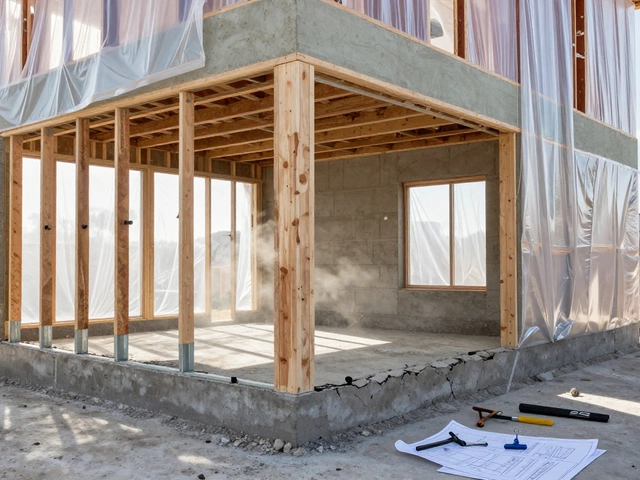Financial Investment: Boost Your Wealth with Real Estate and Home Projects
When planning financial investment, the act of committing money to assets that aim to increase in value. Also known as investment planning, it shapes how you grow wealth over years. One popular path is real estate investment, buying property to earn rental income or capital gains, which often relies on home renovation, upgrading existing structures to raise market value. These upgrades are driven by the construction industry, the sector that supplies labor, materials, and expertise for building projects. For investors who like tangible assets, furniture resale, selling refurbished pieces for profit can add a niche revenue stream. Together, these elements create a network where money, property, and craftsmanship intersect.
Key Areas to Consider
First, understand how real estate investment feeds into home renovation. Buying an older house at a lower price gives you room to remodel kitchens, bathrooms, or storage spaces. A well‑planned kitchen upgrade can lift a property's resale value by 10‑15 %, while adding clever storage solutions—like built‑in sideboards or multi‑purpose furniture—keeps the home functional and appealing. The construction industry sets the cost baseline; high‑quality builders or reputable construction companies bring warranties, proper permits, and reliable timelines, which protect your capital. Second, look at the return on furniture resale. Restoring an antique table or modernizing an old sofa often costs a fraction of buying new. With the right finish, hardware upgrades, and protective treatments, a refurbished piece can fetch 2‑3 times its restoration cost on the market. This approach dovetails with storage optimization: using modular furniture not only saves space but also makes the pieces more attractive to buyers looking for “move‑in ready” homes. Third, factor in emerging trends. Data‑storage solutions for property managers, such as cloud‑based tenancy records, are becoming essential for scaling real‑estate portfolios. Likewise, sustainable construction materials and energy‑efficient lighting—like full‑spectrum LEDs that mimic natural sunlight—reduce operating expenses, boosting net returns. Keeping an eye on these innovations helps you stay ahead of market shifts and maintain profitable margins. Lastly, don’t overlook ancillary services. Landscaping, for instance, can raise curb appeal and increase property value by up to 5 %. Understanding the pay scales for top landscapers lets you budget wisely and avoid overspending on aesthetics that don’t translate into higher rents or sale prices. By linking each of these entities—real estate, renovation, construction, furniture, and ancillary services—you build a diversified investment portfolio that balances long‑term stability with short‑term cash flow. The next section of this page lists practical guides, case studies, and step‑by‑step tutorials that show exactly how to apply these concepts in real life. Dive in to see which strategies match your goals and start turning everyday projects into profitable investments.
Financial Advantages of Building Your Own Home: A Smart Investment?
Building your own home can be a smart financial move under the right circumstances. It allows for customization, potential cost savings, and can even lead to equity gain over time. In this article, we explore the various financial aspects of home building, from cost considerations to long-term benefits. Learn about the potential pitfalls and how to avoid them when embarking on this significant investment.
full article




